Top 10 Prehistoric Animals That Still Walk the Earth
Since the first discovery of dinosaur fossils, humans have been captivated by the idea of life coexisting with creatures from a prehistoric world. But what if I told you that we don’t need to imagine that world entirely? Several animals that exist today are ancient survivors, dating back millions of years, some even older than the dinosaurs themselves. In this article, we will explore 10 remarkable animals with prehistoric roots, expanding on their origins, evolution, and unique characteristics. Experts also weigh in with insights that make these creatures even more fascinating.
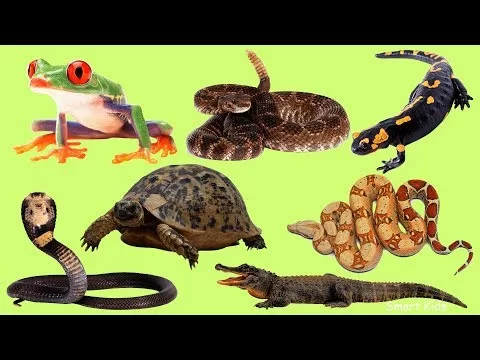
1. Crocodiles: The Fearsome Living Relatives of Dinosaurs
Crocodiles are among the most well-known prehistoric animals alive today. Their evolutionary lineage traces back to the Early Triassic period, roughly 250 million years ago. This was a time when Earth was dominated by the archosaurs—a group of reptiles that gave rise to both crocodiles and dinosaurs. The modern crocodile’s closest relatives include prehistoric giants like Deinosuchus, which lived about 95 million years ago during the Late Cretaceous period. Deinosuchus was a massive predator, reaching up to 35 feet in length.
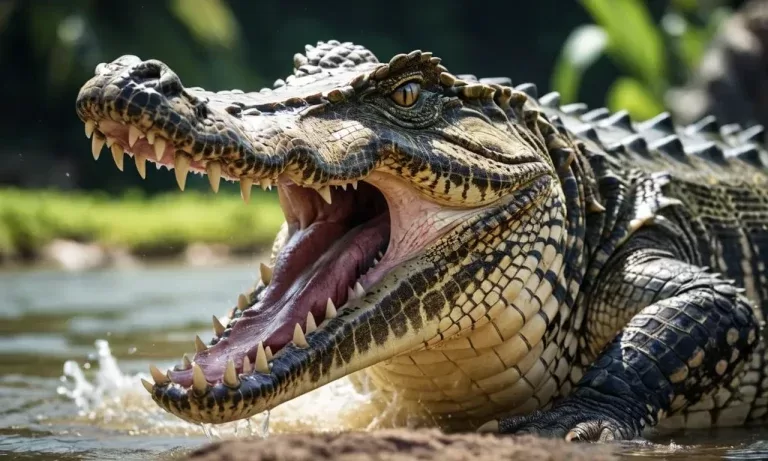
Despite their age, crocodiles have remained relatively unchanged, adapting to their environments with precision. Their bodies are equipped with a powerful snout, sharp teeth, and strong tails, which make them formidable water-based predators. Today, you can find crocodiles in tropical regions across Africa, Asia, Australia, and the Americas. The only other archosaurs that survived the mass extinction event 66 million years ago were birds. Hence, crocodiles share a closer relationship with birds than other reptiles.
2. Cassowaries: The Modern-Day Descendants of Velociraptors
Cassowaries, flightless birds native to northern Australia, Papua New Guinea, and Indonesia, are sometimes referred to as the closest living relatives of the velociraptors. Their giant, clawed feet alone give off an air of prehistoric terror. The bird is the third-largest species on Earth and is known for its aggressive behavior and remarkable ability to defend itself. Standing up to 6.6 feet tall, cassowaries possess a unique feature—their casque, a horn-like crest on their heads. This structure has been the subject of scientific debate. Some suggest it helps regulate heat, while others believe it amplifies the bird’s low-frequency calls, which are too deep for humans to hear.
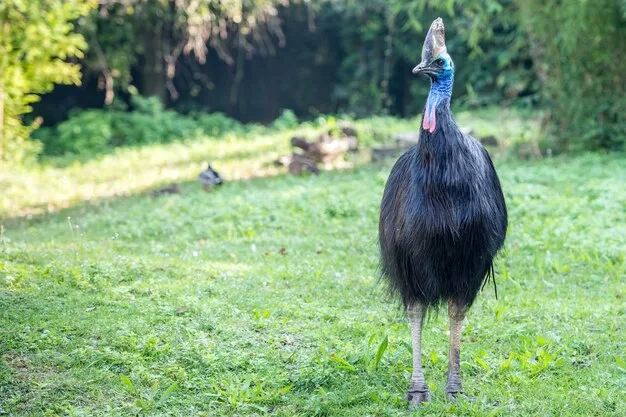
Cassowaries lay strikingly green eggs, swim proficiently, and are known to attack humans if provoked. Their sharp claws and swift reflexes contribute to their reputation as modern-day dinosaurs. They are another example of how avian species today hold onto characteristics from their ancestors who ruled the earth millions of years ago.
3. Tuataras: The Ancient Reptiles That Time Forgot
Native to New Zealand, tuataras are sometimes mistakenly identified as lizards. However, they belong to a distinct group of reptiles known as Rhynchocephalia, which flourished between 240 and 60 million years ago. Remarkably, tuataras have barely changed since then and are the only surviving species of their lineage. They inhabit the remote islands of New Zealand, preying on small creatures like beetles, spiders, and birds, which they decapitate with their uniquely serrated teeth.
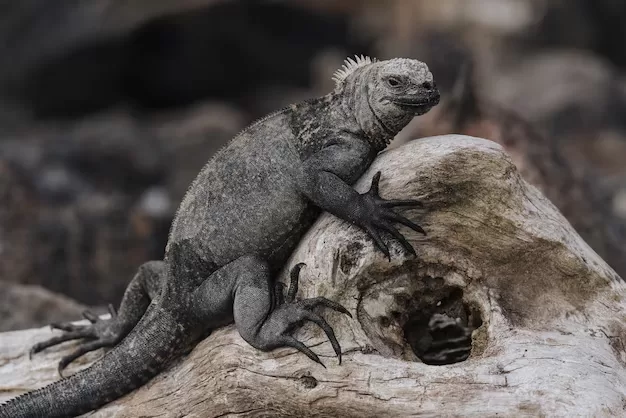
The tuatara has several bizarre characteristics, such as a parietal eye—a third eye on top of its head, which is thought to help with regulating circadian rhythms. Capable of living for over 100 years, tuataras have survived ice ages and volcanic eruptions, making them one of the hardiest creatures on Earth. Although often called a “living dinosaur,” genetic studies show they diverged from other reptiles long before dinosaurs existed.
4. Sharks: Survivors of Every Major Extinction Event
Sharks have been swimming in the oceans for over 450 million years, making them older than dinosaurs, trees, and even the formation of continents as we know them. The earliest shark fossils date back to the Silurian period, and these ancient predators have survived every mass extinction event. One of the most famous ancient sharks is Megalodon, a massive predator that could grow up to 60 feet long.
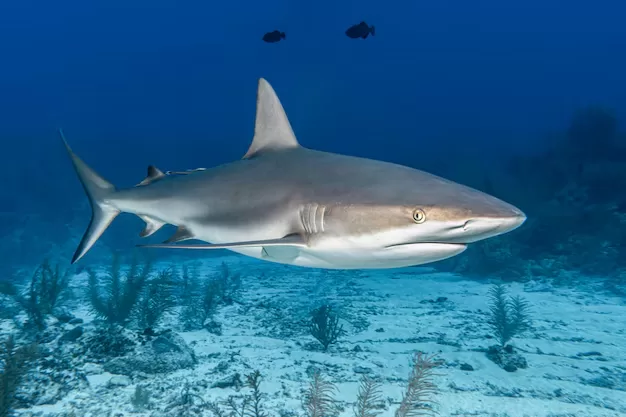
Sharks come in all shapes and sizes, from the bizarre hammerhead to the glowing lantern shark, which has the ability to light up in the dark depths of the ocean. One particularly strange prehistoric species was the Helicoprion, known for its spiral-shaped tooth arrangement, resembling a buzzsaw. Despite evolving for millions of years, sharks retain many of their ancestors’ primitive features, such as their cartilaginous skeletons, making them efficient hunters.
5. Lizards: Evolution’s Most Adaptable Survivors
Lizards are incredibly diverse, with over 10,000 species living today, and they belong to the reptilian group Squamata, which also includes snakes. Their evolutionary history dates back to the Late Triassic period, around 230 million years ago, but they diverged from the archosaurs (dinosaurs and crocodiles) long before that. While dinosaurs evolved upright, lizards kept their sprawling limb structure, which allows them to move in unique ways.
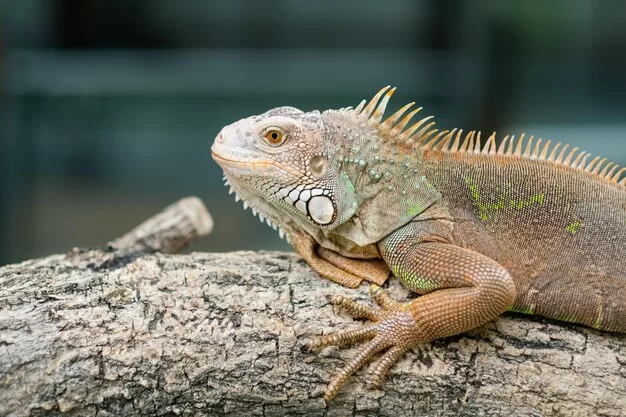
Throughout history, lizards have evolved a stunning array of abilities, from gliding through the air to walking on water. Their adaptability has helped them survive mass extinctions, enabling them to colonize every continent except Antarctica. Some species, like geckos, can even regrow lost limbs, showcasing the evolutionary ingenuity of these resilient creatures.
6. Crabs: The Armored Survivors of the Dinosaur Era
Crabs, though not as old as some of the animals on this list, have deep evolutionary roots. The ancestors of modern crabs appeared around 200 million years ago during the Jurassic period. These crustaceans quickly diversified during what scientists refer to as the “Cretaceous crab revolution,” which took place between 200 and 150 million years ago. By the end of this evolutionary period, about 80% of modern crab species had evolved.
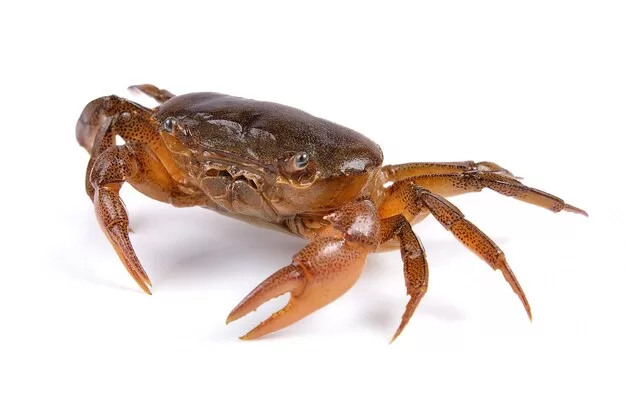
Despite their small size, crabs are heavily armored and boast powerful pincers, which they use both for hunting and defending themselves. Some species, like the horseshoe crab, are even older, having first appeared around 450 million years ago, and have remained largely unchanged. Crabs have successfully adapted to a wide range of habitats, from freshwater to deep-sea environments.
7. Ostriches: Earth’s Largest Birds with Prehistoric Origins
Ostriches, the world’s largest birds, belong to a group called ratites, which also includes emus, cassowaries, and kiwis. These flightless birds are thought to have evolved from smaller, flying ancestors that once shared the skies with the dinosaurs. Over time, these birds lost their ability to fly, likely because their large bodies helped them survive on the ground. Ostriches can grow to heights of up to 9 feet and weigh as much as 320 pounds.
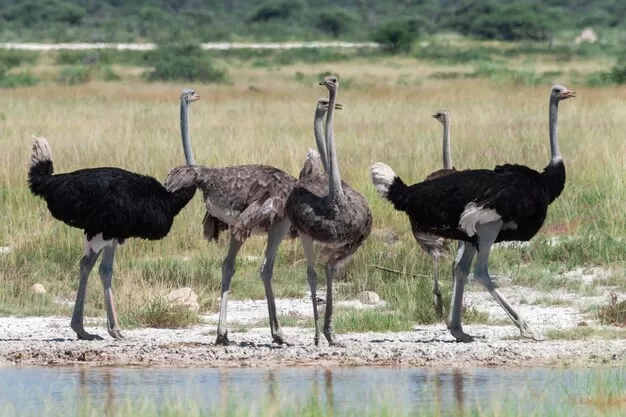
Ostriches have shaggy feathers and a powerful kick that can kill predators like lions. Their jaw structures are more similar to reptiles than other birds, further linking them to their ancient lineage. The feathers on ostriches resemble the fur or shaggy coats found on some dinosaurs, showing how certain traits persist through evolution.
8. Sea Turtles: Ancient Navigators of the Oceans
Sea turtles are among the most resilient creatures on the planet. The oldest fossils of sea turtles date back to the Late Triassic period, about 230 million years ago. These creatures survived the mass extinction event that wiped out the dinosaurs, and today, they can be found in oceans around the globe. Part of the Testudines family, which includes tortoises and terrapins, sea turtles have evolved to thrive in both saltwater and freshwater environments.
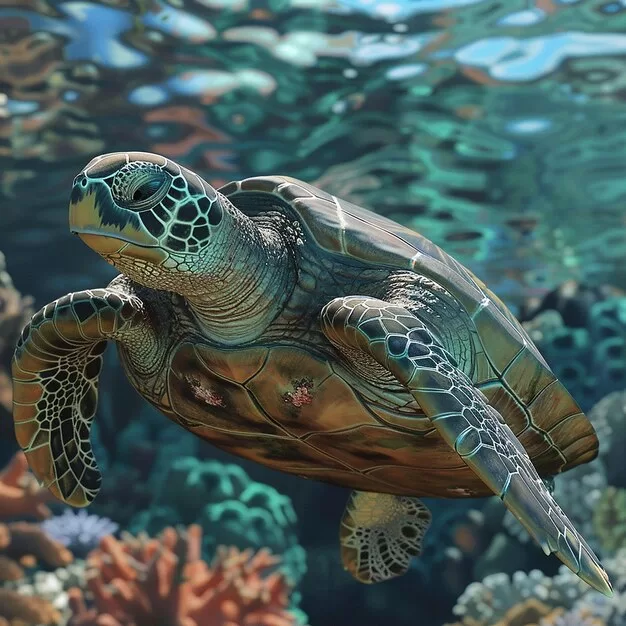
One of the reasons for their longevity is the turtles’ incredible ability to navigate using the Earth’s magnetic fields. Females often return to the exact beach where they were born to lay their eggs. The oldest sea turtles, such as Archelon, which lived around 80 million years ago, had a wingspan of up to 16 feet, much larger than any modern species.
9. Chickens: The Closest Living Relative to the Tyrannosaurus Rex
It may sound surprising, but the humble chicken is the closest living relative to the fearsome Tyrannosaurus rex. This link was discovered in 2003 when paleontologist Jack Horner and molecular biologist Mary Schweitzer found preserved soft tissue in a T. rex fossil. The collagen molecules inside the fossil were strikingly similar to those found in modern birds, particularly chickens and ostriches.
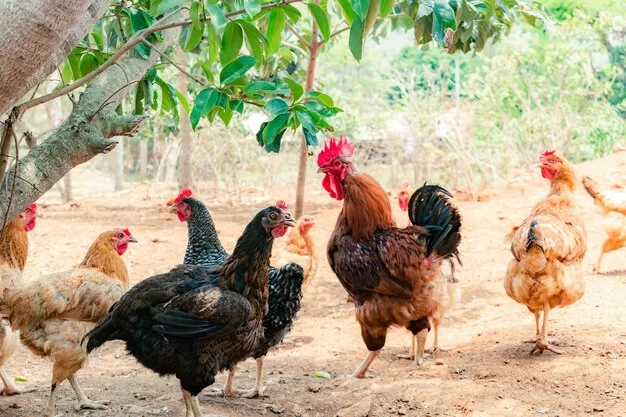
This discovery changed the way scientists viewed the relationship between birds and dinosaurs. Today, it’s well established that many species of dinosaurs were feathered, further cementing the evolutionary connection. So, the next time you sit down to enjoy a chicken dinner, remember that you are eating a distant cousin of one of the most fearsome predators in history.
10. Snakes: Evolutionary Marvels with Deep Roots in Prehistory
Snakes are another example of creatures that have thrived for millions of years. They evolved from legged reptiles during the Late Cretaceous period, around 100 million years ago. The earliest known snake species, Pachyrhachis problematicus, still had vestigial hind limbs, but over time, snakes evolved to lose their limbs entirely.
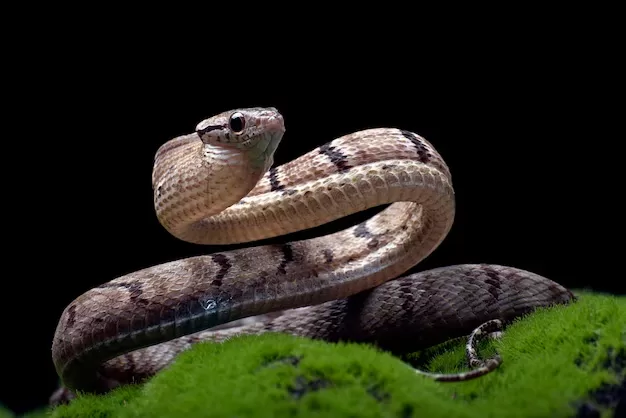
Snakes have adapted to a wide variety of environments, from deserts to rainforests, by developing unique traits such as venom, elongated bodies, and specialized skulls that allow them to consume prey much larger than their heads. The snake’s ability to thrive in so many different habitats is a testament to their evolutionary success.
Expert Opinions on Prehistoric Animals Today
To add depth and credibility to our exploration of these fascinating creatures, we consulted several experts in the field:
- Dr. Michael Benton, a paleontologist at the University of Bristol, states, “Crocodiles are fascinating because they show us how successful an ancient design can be. They are a perfect example of how certain traits can remain effective over millions of years.”
- Dr. Patricia Wright, a primatologist and conservationist, emphasizes the importance of conserving these ancient species. “Creatures like the tuatara remind us of our planet’s biodiversity and the responsibility we have to protect these remnants of the past.”
- Dr. Stephen Brusatte, a paleontologist at the University of Edinburgh, notes, “Understanding how birds evolved from dinosaurs gives us insights into how life can adapt and survive. Chickens being related to T. rex illustrates the incredible journey of evolution.”
- Dr. Elizabeth Woehlke, an ecologist specializing in marine life, asserts, “Sea turtles are truly ancient navigators. They have lived through periods of extreme environmental change, and their survival highlights the need for ongoing conservation efforts.”
Conclusion: Embracing Our Prehistoric Legacy
The incredible animals we have explored today are more than just remnants of the past; they represent the evolutionary resilience of life on Earth. Each species carries unique characteristics and survival strategies that have allowed them to endure through significant ecological changes. As we learn more about these creatures and their deep-rooted connections to prehistoric life, it is imperative that we focus on conservation efforts to ensure their continued existence. By understanding our natural history, we can appreciate the diversity of life today and work toward preserving it for future generations.
📚 Take Your Trading And Financial Skills to the Next Level!
If you enjoyed this post, dive deeper with our Profitable Trader Series—a step-by-step guide to mastering the stock market.
- Stock Market 101: Profits with Candlesticks
- Stock Market 201: Profits with Chart Patterns
- Stock Market 301: Advanced Trade Sheets
Start your journey now!
👉 Explore the Series Here
For Regular News and Updates Follow – Sentinel eGazette
FAQs
Q1: What is the significance of studying prehistoric animals?
A1: Studying prehistoric animals helps scientists understand evolution, biodiversity, and the adaptations that allow species to survive and thrive through drastic environmental changes.
Q2: How do crocodiles adapt to their environments?
A2: Crocodiles have evolved powerful jaws, sharp teeth, and excellent swimming capabilities, enabling them to hunt effectively in various aquatic habitats.
Q3: Are cassowaries dangerous to humans?
A3: Yes, cassowaries can be aggressive and pose a threat to humans if provoked. Their powerful legs can deliver fatal kicks.
Q4: Why are sea turtles considered ancient navigators?
A4: Sea turtles have existed for over 200 million years, possessing an innate ability to navigate using Earth’s magnetic fields, often returning to the exact beach where they were born to nest.
Q5: What role do sharks play in marine ecosystems?
A5: Sharks are apex predators that help maintain the balance of marine ecosystems by controlling the populations of other marine species.